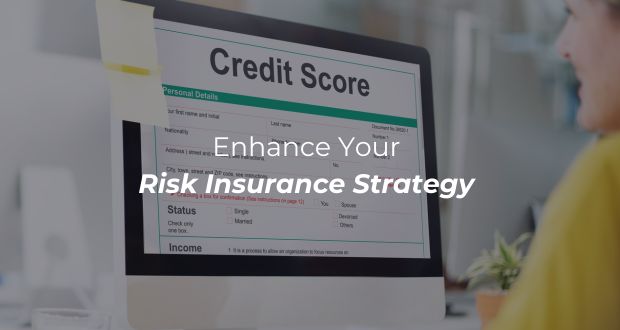The Importance of Risk Insurance
Businesses operate in a dynamic environment where risks are inherent. Whether it’s property damage, liability claims, supply chain disruptions, or data breaches, the impact can be significant. Risk insurance provides a safety net, allowing companies to transfer or mitigate these risks. Without adequate coverage, organizations face financial strain, reputational damage, and operational setbacks.
In today’s digital age, staying ahead requires more than traditional risk assessment methods. Technological innovations are reshaping risk insurance practices, enabling smarter decision-making and proactive risk management. From advanced analytics to AI-driven solutions, businesses must embrace these tools to enhance their risk insurance strategies.
By integrating technology, organizations can:
- Analyze Risks More Effectively: Data-driven insights allow for better risk assessment, identifying vulnerabilities and potential threats.
- Optimize Policies: Technology enables customization of insurance policies to match specific business needs.
- Mitigate Cyber Risks: As cyber threats escalate, cyber risk insurance becomes critical. Technology helps detect and prevent breaches.
Technological Innovations in Risk Insurance
Recent Advancements
In recent years, risk insurance has undergone a significant transformation due to advancements in technology. Here are some key developments:
1. Artificial Intelligence (AI) and Machine Learning (ML):
Artificial Intelligence (AI) and Machine Learning (ML) are revolutionizing the insurance industry by providing sophisticated tools for analyzing vast amounts of data to identify patterns, assess risks, and predict potential losses. AI algorithms can sift through enormous datasets to uncover trends that might not be immediately apparent to human analysts. Meanwhile, ML models enhance this capability by continuously learning from historical data, thereby improving the accuracy of risk assessments over time. Insurers are leveraging AI-powered chatbots to streamline customer interactions and expedite claims processing, making the entire process more efficient and responsive.
2. Data Analytics:
In addition to AI and ML, data analytics plays a crucial role in modern insurance practices. Big data analytics enables insurers to extract valuable insights from a multitude of diverse data sources, providing a more comprehensive understanding of risk factors. Real-time data feeds further enhance risk monitoring, allowing insurers to make proactive decisions based on the most current information available. Predictive analytics is another powerful tool in the insurer's arsenal, helping to anticipate emerging risks and adjust insurance strategies accordingly. By integrating these advanced technologies, insurers can not only improve their risk assessment and management capabilities but also offer more tailored and timely services to their customers.
Transforming Risk Assessment and Policy Management
Precision Risk Assessment:
The integration of advanced technologies such as AI, automated underwriting, and blockchain is transforming the insurance industry, leading to more precise risk assessments, streamlined processes, and enhanced security. AI-driven risk models are at the forefront of this transformation, as they have the capability to consider multiple variables simultaneously, resulting in significantly more accurate risk assessments. This allows insurers to tailor policies based on individual risk profiles, optimizing both coverage and premiums to better meet the needs of their clients.
Automated Underwriting:
Automated underwriting is another area where AI is making a substantial impact. By automating the underwriting process, insurers can reduce the manual effort traditionally involved, thereby speeding up policy issuance. This is particularly advantageous for InsurTech startups, which leverage automated underwriting to provide instant quotes and policy approvals, enhancing customer satisfaction through quicker and more efficient service.
Blockchain Technology:
Blockchain technology further complements these advancements by ensuring transparency, security, and trust in insurance transactions. The decentralized nature of blockchain makes it an ideal solution for maintaining secure and immutable records. Additionally, smart contracts built on blockchain platforms can automate claims settlement, reducing administrative overhead and expediting the claims process. Together, these technologies not only improve operational efficiency but also enhance the overall customer experience in the insurance sector.
The Role of InsurTech Startups
Disrupting Traditional Models:
The insurance industry is undergoing a significant transformation, largely driven by the emergence of InsurTech companies that are disrupting traditional models and placing a strong emphasis on customer-centric approaches. InsurTech firms challenge established insurers by offering innovative solutions that leverage cutting-edge technologies and novel business models. Their agility allows them to experiment with and quickly implement new technologies, which can result in more efficient and effective services compared to traditional insurers.
Customer-Centric Approach:
A key aspect of this disruption is the focus on user experience. InsurTech startups prioritize simplifying policy management and claims processes, making the entire insurance journey more intuitive and less cumbersome for customers. By utilizing mobile apps and digital platforms, these companies enhance accessibility for policyholders, enabling them to manage their policies, file claims, and receive support with ease and convenience. This customer-centric approach not only improves satisfaction but also fosters greater engagement and loyalty among policyholders.
In summary, embracing technological innovations is essential for risk insurers to stay competitive, enhance risk assessment accuracy, and provide seamless experiences for policyholders. InsurTech startups play a crucial role in driving this transformation.
Risk Assessment Methods
Quantitative vs. Qualitative Approaches
Quantitative and qualitative risk assessments are two fundamental approaches used to evaluate and manage risks, each offering unique methodologies and benefits.
Quantitative Risk Assessment:
Quantitative and qualitative risk assessments are two fundamental approaches used to evaluate and manage risks, each offering unique methodologies and benefits. Quantitative risk assessment involves assigning numerical values to risks, providing a precise and measurable way to gauge potential threats. Key examples of quantitative methods include Expected Loss (EL), which calculates the average loss based on probabilities and impact, and Value at Risk (VaR), which estimates the maximum potential loss within a specified confidence interval. Another powerful tool is the Monte Carlo Simulation, which uses random sampling to model various scenarios, offering a comprehensive view of potential outcomes. The primary benefit of quantitative risk assessment is that it provides precise risk metrics that are invaluable for informed decision-making, enabling organizations to allocate resources effectively and mitigate risks proactively.
Qualitative Risk Assessment:
On the other hand, qualitative risk assessment relies on expert judgment and descriptive scales to evaluate risks. This approach is particularly useful when data is scarce or when a quick, intuitive assessment is needed. Examples of qualitative methods include Risk Matrices, which categorize risks based on their likelihood and severity, and Scenario Analysis, which explores various “what-if” situations qualitatively. Additionally, Risk Registers serve as a tool to document risks and their potential impact, providing a structured way to track and manage risk information. The benefits of qualitative risk assessment lie in its simplicity and speed, making it a practical choice for initial assessments or when detailed quantitative data is not available.
Technology-Driven Enhancements
Data Analytics:
Technology-driven enhancements are revolutionizing the field of risk management, offering unprecedented capabilities through data analytics, machine learning (ML), and geospatial technology. At the forefront of these advancements is data analytics, which leverages real-time data to enable continuous risk monitoring. By utilizing predictive modeling, algorithms can analyze historical data to forecast future risks, providing faster insights and facilitating proactive risk management. This technological capability allows organizations to stay ahead of potential threats, optimizing their strategies and responses accordingly.
Machine Learning (ML):
Machine learning further enhances risk management by automating pattern recognition and detecting anomalies. ML algorithms excel at identifying hidden risk patterns that might be overlooked by human analysts. In the realm of fraud detection, ML proves invaluable by spotting suspicious activities and anomalies, significantly improving accuracy and reducing the need for manual intervention. The integration of ML into risk management processes not only streamlines operations but also enhances the precision and reliability of risk assessments.
Geospatial Technology:
Geospatial technology adds another layer of sophistication to risk assessment through tools like Geographic Information Systems (GIS) and spatial analysis. GIS maps risks based on location, offering a visual representation of potential threats. Spatial analysis can identify vulnerable areas, such as flood zones, enabling precise risk assessments for properties and natural disasters. This geographic perspective is crucial for industries like insurance, real estate, and urban planning, where location-specific risks must be meticulously managed.
Real-Time Data and Predictive Modeling
- Benefits of Real-Time Data:some text
- Timely Decision-Making: Real-time insights allow rapid risk response.
- Dynamic Adjustments: Adapt strategies based on changing conditions.
- Examples: IoT sensors, social media data, market feeds.
- Predictive Modeling Advantages:some text
- Early Warning: Predictive models anticipate risks before they escalate.
- Portfolio Optimization: Optimize risk exposure across diverse assets.
- Examples: Credit scoring models, catastrophe risk models.
Incorporating technology into risk assessment empowers businesses to make informed decisions, respond swiftly, and stay resilient. Whether quantitative or qualitative, the right methods combined with data-driven insights lead to effective risk management.
Cyber Risk Insurance
The Growing Importance
As businesses increasingly rely on digital infrastructure, cyber risks have become a top concern. Here’s why cyber risk insurance matters:
Rising Threat Landscape:
The growing importance of cyber risk insurance cannot be overstated in today's digital age, as businesses increasingly depend on digital infrastructure to drive their operations. Cyber risks have rapidly ascended to the top of corporate concerns due to an escalating threat landscape characterized by a surge in cyberattacks, data breaches, and ransomware incidents. These cyber threats pose significant financial risks, including direct monetary losses, reputational damage, and potential legal liabilities. The frequency and sophistication of these attacks underscore the urgent need for robust cyber risk management and insurance solutions.
Business Impact:
The impact of cyber incidents on business operations can be profound and far-reaching. Disruptions caused by cyberattacks can halt business activities, leading to operational downtime and loss of revenue. Moreover, such incidents can severely erode customer trust, as clients and partners may question the security and reliability of a compromised organization. In addition to these immediate concerns, businesses must also navigate the complex landscape of regulatory compliance. Failure to adequately protect sensitive data can result in hefty regulatory fines and sanctions, further compounding the financial and reputational consequences of a cyber incident.
Exploring Cyber Threats
Malware Attacks:
One of the most prevalent forms of cyber threats is malware attacks, which include viruses, Trojans, and ransomware. These malicious software programs are designed to infiltrate and damage computer systems, leading to significant downtime, data loss, and in the case of ransomware, financial extortion. The impact of malware attacks can be devastating, as they not only cripple operational capabilities but also often demand hefty ransoms to restore access to compromised data and systems.
Phishing and Social Engineering:
Phishing and social engineering attacks are another common and highly effective category of cyber threats. These tactics involve deceptive emails, phone calls, or messages that trick users into divulging sensitive information such as login credentials, financial information, or personal details. The impact of successful phishing and social engineering attacks can be severe, resulting in stolen credentials, financial fraud, and identity theft. These attacks exploit human vulnerabilities and can bypass even the most robust technical defenses, highlighting the importance of user education and awareness in cybersecurity strategies.
Insider Threats:
Insider threats pose a unique and particularly challenging risk to organizations. These threats originate from within the organization, involving employees, contractors, or partners who have legitimate access to systems and data but act with malicious intent. Insider threats can lead to unauthorized access, data leaks, and even sabotage of critical systems. The impact of insider threats is often profound, as insiders typically have intimate knowledge of the organization's operations and security measures, enabling them to circumvent defenses more easily and cause significant harm.
Mitigating Cyber Risks with Technology
Advanced Threat Detection:
One of the most effective ways to enhance cybersecurity is through advanced threat detection systems. AI-driven solutions, in particular, play a pivotal role by continuously monitoring network traffic for anomalies that could indicate potential security breaches. These sophisticated systems can analyze vast amounts of data in real-time, providing immediate alerts when suspicious activities are detected. This proactive approach enables organizations to respond swiftly to threats, significantly reducing the likelihood of successful cyberattacks and minimizing potential damage.
Endpoint Security:
Endpoint security is another critical component in the fight against cyber threats. As the number of connected devices, such as computers and mobile phones, continues to grow, each endpoint presents a potential entry point for malicious actors. Protecting these devices from malware and other cyber threats is crucial. Effective endpoint security measures include the use of encryption to safeguard data, firewalls to block unauthorized access, and regular software updates to patch vulnerabilities. By implementing these measures, organizations can fortify their defenses and reduce the risk of cyber incidents originating from compromised devices.
Incident Response Planning:
Incident response planning is also vital for mitigating the impact of cyber risks. Developing comprehensive protocols for handling breaches ensures that organizations are prepared to act quickly and effectively when a cyber incident occurs. Technology plays a crucial role in incident response by aiding in the swift containment and recovery of compromised systems. Automated tools can help identify the source of the breach, isolate affected areas, and restore normal operations with minimal disruption. Having a well-defined incident response plan, supported by advanced technological solutions, enables organizations to manage cyber incidents more efficiently and recover more rapidly.
Insurance Risk Modelling
Understanding Risk Modeling
Risk modeling is the process of quantifying and assessing potential risks faced by an organization. It involves analyzing historical data, statistical methods, and mathematical models to predict future losses. Here’s why risk modeling matters:
- Accurate Risk Assessment:some text
- Models help insurers understand the likelihood and severity of specific risks.
- They inform pricing, underwriting decisions, and capital allocation.
- Tailored Policies:some text
- Risk modeling allows insurers to customize policies based on individual risk profiles.
- Businesses benefit from coverage that aligns with their unique needs.
Technology-Enabled Accuracy
- Data Availability:some text
- Technology provides access to vast amounts of data (e.g., historical claims, market trends).
- Insurers use this data to refine risk models and improve accuracy.
- Predictive Analytics:some text
- Algorithms analyze patterns and correlations.
- Predictive models anticipate future risks, enhancing decision-making.
Catastrophe Modeling
What Is It?
Catastrophe modeling is a sophisticated analytical process used to simulate large-scale events such as natural disasters and pandemics. These models are designed to estimate potential losses by considering a variety of factors, including geographic location, building types, and levels of exposure. By integrating historical data, scientific research, and statistical methods, catastrophe models provide a comprehensive view of the potential impact of catastrophic events. This allows stakeholders to understand the scope and scale of possible damages, enabling more informed decision-making and risk management.
Benefits:
The benefits of catastrophe modeling are manifold, particularly for insurers and businesses. For insurers, these models are invaluable tools for assessing risks associated with events like earthquakes, hurricanes, and floods. By accurately estimating potential losses, insurers can set appropriate premiums, allocate reserves, and develop reinsurance strategies to mitigate financial exposure. This not only helps in maintaining the financial stability of insurance companies but also ensures that they can meet their obligations to policyholders in the aftermath of a disaster.
Scenario Analysis and Stress Testing
- Scenario Analysis:some text
- Examines “what-if” scenarios (e.g., economic downturns, regulatory changes).
- Helps insurers understand vulnerabilities and adjust strategies.
- Stress Testing:some text
- Tests the impact of extreme events on insurers’ financial health.
- Ensures solvency and resilience.
Risk Insurance Policies and Best Practices
Evolving Landscape of Risk Insurance Policies
- Dynamic Coverage:some text
- Traditional policies may not adequately address emerging risks.
- Businesses need policies that adapt to changing circumstances.
- Industry-Specific Policies:some text
- Tailored policies for sectors like healthcare, technology, or manufacturing.
- Address industry-specific risks comprehensively.
Best Practices for Policy Design
- Risk Profiling:some text
- Understand the unique risks your business faces.
- Consider location, operations, and industry.
- Customization:some text
- Work with insurers to customize policy terms.
- Include endorsements for specific risks (e.g., cyber liability, supply chain disruptions).
- Policy Limits and Deductibles:some text
- Set appropriate coverage limits.
- Balance affordability with adequate protection.
Technology’s Role in Tailoring Policies
- Data-Driven Insights:some text
- Technology provides real-time data on risks.
- Insurers use analytics to assess exposure accurately.
- Parametric Insurance:some text
- Technology-enabled policies trigger payouts based on predefined events (e.g., earthquake magnitude).
- Streamlined claims process.
- Blockchain for Transparency:some text
- Immutable records enhance trust.
- Smart contracts automate policy execution.
TrustDecision’s AI-Based Fraud Management Solution
TrustDecision is a leading provider of risk management solutions. With years of expertise, we empower businesses to proactively manage risks, protect assets, and enhance operational efficiency. Our commitment to innovation drives us to develop cutting-edge solutions that address the evolving risk landscape.
Key Features
- Real-time Fraud Detection:some text
- Our solution monitors transactions, user behavior, and interactions in real time.
- Instantly identifies suspicious activities, such as unusual spending patterns or unauthorized access attempts.
- Alerts businesses to potential fraud, allowing swift action.
- Adaptive Machine Learning:some text
- Our self-learning algorithms continuously adapt to new fraud patterns.
- As fraudsters evolve their tactics, our system evolves too.
- Adaptive machine learning ensures accurate detection without manual rule adjustments.
- Customizable Rules Engine:some text
- Businesses can tailor fraud detection rules to their specific needs.
- Define thresholds, triggers, and risk tolerance levels.
- Flexibility allows customization for different industries and risk profiles.
TrustDecision’s AI-based solution combines technology, data, and expertise to safeguard businesses from financial losses due to fraud.














